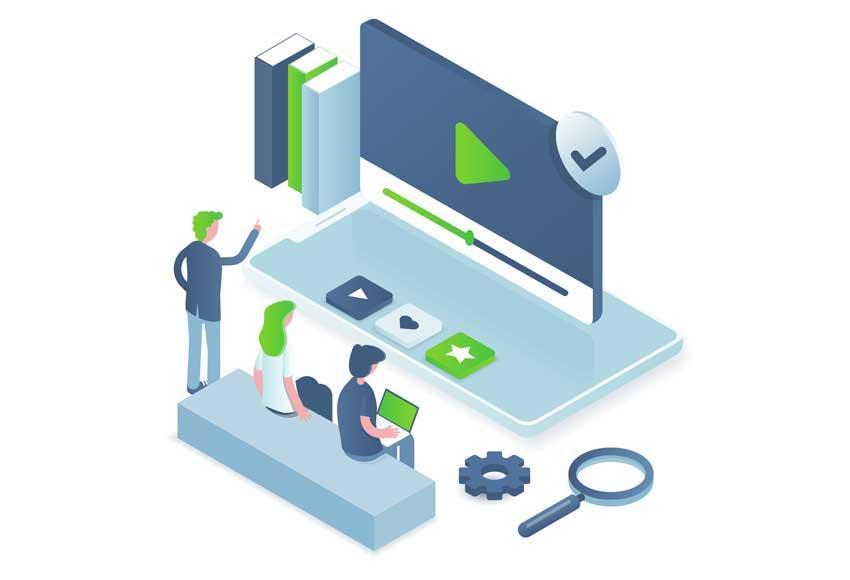Microlearning: the Key to engaging and Meeting Modern Learners’ Needs
In today’s fast-paced world, attention spans are shrinking, and learners demand rapid, flexible, and engaging educational experiences. Microlearning has emerged as the solution,offering bite-sized learning modules that deliver targeted content when and where it’s needed. In this complete guide, we’ll explore microlearning, its benefits, practical implementation tips, and real-world case studies showing its transformative potential for individuals and organizations alike.
What is Microlearning?
Microlearning refers to instructional content delivered in short, focused bursts, typically ranging from 2 to 10 minutes.These lessons are designed to address one specific learning objective at a time,maximizing knowledge retention and engagement. Microlearning materials may include:
- Videos
- Quizzes
- infographics
- Simulations
- Podcasts
- Interactive e-learning modules
Unlike traditional, lengthy courses, microlearning solutions are accessible on-demand, allowing learners to fit education seamlessly into their daily routines. This approach closely aligns with how modern learners prefer to acquire new information—quickly, efficiently, and on-the-go.
why Microlearning is Ideal for Modern Learners
Microlearning addresses the challenges faced by today’s learners:
- Short Attention Spans: Learners engage best with compact, focused content.
- Busy Schedules: Employees and students can complete lessons between tasks or during commutes.
- Mobile & Remote Learning: Lessons are optimized for smartphones,tablets,and desktops.
- Immediate Relevance: Bite-sized modules align with just-in-time training needs.
The flexibility and accessibility of microlearning make it the perfect choice for distributed teams, remote workers, and anyone seeking to learn outside traditional classroom environments.
Key Benefits of Microlearning
Microlearning offers a range of significant advantages for educators, corporate trainers, and learners themselves.Here are the top benefits:
-
improved Engagement:
Interactive, concise modules are more likely to capture and hold learners’ attention.
-
Higher knowledge Retention:
Focused lessons help prevent cognitive overload, aiding memory recall.
-
Increased flexibility:
Learning anytime, anywhere means education fits around busy lifestyles.
-
Cost-Effectiveness:
Creating smaller modules reduces progress time and resources.
-
Rapid Deployment:
Organizations can roll out new training material quickly when responding to changing environments.
-
Personalized Learning Paths:
Modules can be blended and sequenced to address individual needs.
How to Implement Microlearning Successfully
ready to integrate microlearning into your organization or classroom? Here are some practical tips for effective implementation:
-
Identify Clear Learning Objectives:
Each module should address a specific goal to keep content focused and actionable.
-
Choose the Right Format:
Match media (videos, quizzes, infographics) to your content and audience preferences.
-
leverage Mobile Learning Technology:
Ensure materials are compatible across devices for maximum accessibility.
-
Make learning Interactive:
Use gamification elements, branching scenarios, and quizzes to boost participation and motivation.
-
blend Microlearning with Other Methods:
Use micro-units to supplement longer e-learning courses or support face-to-face training.
-
Track Performance Metrics:
Use analytics to monitor engagement and knowledge retention, refining modules as needed.
Microlearning in Action: Real-World Case Studies
Corporate Training Success at Google
Google famously implemented microlearning in its internal employee training. By breaking complex topics into 5-minute, focused modules, they increased participation rates, improved knowledge retention, and quickly adapted training to new developments in technology and compliance.
Academic Achievement at Arizona State University
Arizona State University incorporated microlearning into its online courses. Results showed students were more engaged, performed better in assessments, and appreciated the on-demand nature of their education, especially those balancing work and study.
Healthcare Compliance Boost at GE Healthcare
GE Healthcare used microlearning to address compliance and safety training for distributed teams. Short,scenario-based lessons led to higher completion rates,reduced training costs,and improved workplace safety outcomes.
Frist-Hand Experience: Microlearning from a Learner’s Perspective
“I was skeptical at first,” admits Sarah, a marketing professional who completed her company’s microlearning-based leadership training. “But being able to squeeze in five-minute modules between meetings made it easy to stay on track.The content was super relevant and helped me apply new skills right away.I’ve completed more training this year than ever before.”
Best SEO Practices for Microlearning Content
Optimizing microlearning content for SEO ensures your modules reach the broadest possible audience. here’s how to enhance search visibility:
-
Use Relevant Keywords:
Integrate terms like microlearning, engaging learners, mobile learning, and rapid e-learning naturally throughout content and module titles.
-
Leverage Header Tags:
Structure lessons with clear H1, H2, and H3 tags to improve both user navigation and search engine indexing.
-
Mobile Optimization:
Ensure pages and multimedia are responsive and fast-loading for users on any device.
-
Rich Snippet opportunities:
Provide concise, well-organized bullet points, lists, and structured content for featured snippets.
-
Internal and External Linking:
Link to other relevant microlearning resources, blog posts, case studies, and authoritative sources.
Potential Challenges and Solutions
While microlearning has many advantages, it’s not without challenges. Here are common issues and solutions:
-
Fragmented Learning Experience:
Solution: Sequence modules logically and provide summaries to reinforce connections between concepts.
-
Lack of Depth:
Solution: Use microlearning to supplement,not replace,deep-dive instruction when needed.
-
Low Completion Rates Without Motivation:
Solution: Add gamification, incentives, and frequent feedback to keep learners involved.
Conclusion: The Future of Microlearning
Microlearning is revolutionizing education and training by prioritizing engagement, flexibility, and relevance. By delivering content in digestible chunks, it meets the needs of modern learners who demand convenience, personalization, and immediate impact. Weather you’re an HR leader, an educator, or a self-driven professional, adopting microlearning can boost knowledge retention, increase motivation, and accelerate skill acquisition.
Embrace microlearning today—make learning faster, smarter, and more engaging for everyone in your organization or classroom.
Ready to transform your learning strategy? Start with microlearning and experience the difference. For more insights or tailored microlearning solutions, explore our additional resources or contact us today!

